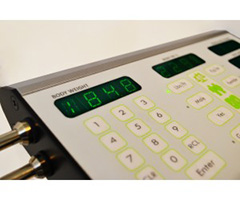BMI
Calculate Your Body Mass Index
YOUR BMI
Please see chart below.
BMI |
ANALYSIS |
| 18.5 or less | Underweight |
| 18.5 – 24.9 | Normal Weight |
| 30 – 34.9 | Obesity (Class 1) |
| 35 – 39.9 | Obesity (Class 2) |
| 40 – 49.9 | Morbid Obesity |
| 50 – 59.9 | Moderately Severe Morbid Obesity |
| 60 or greater | Severe Morbid Obesity |

Body Mass Index or BMI is a ratio of weight to the square of an individual’s height. It is often used to determine whether your weight is appropriate to your height.
This is also a way to say objectively whether you are underweight, within a normal range, overweight, obese, or morbidly obese. If you are under or overweight this tool also allows you to see by how much you are under or overweight.
There are several inherent errors that are present when you calculate a BMI. The main error involves the amount of muscle mass a person has. People with greater muscle mass could be thought to have normal BMI’s even when the number shows that they are overweight while people with lower muscle mass may be categorized as normal weight when in reality they are overweight.
This difference is also seen when comparing BMI’s with men and women. Because men usually have greater muscle mass, a normal BMI for a man might be in the range of 22-26 while a normal BMI for a woman is lower and might be between 18.5 and 23.
The rate at which we expect people to lose weight is determined by muscle mass. The greater the muscle mass, the faster the weight loss. The three main factors that play a role in muscle mass are age, sex, and weight. Men who are younger and heavier will have greater muscle mass while women who are older and lighter will have less muscle mass.
Ideal Weight
Calculate your ideal body weight
YOUR IDEAL WEIGHT
*Measurement given in pounds
A frequent question I receive from patients is “what should be my ideal body weight?” This question is actually hard to answer and is somewhat controversial. One method would be to tell someone what their weight would be by giving them their weight at a range of appropriate BMI’s. This results in a pretty broad range of ideal weights.
Also there is the problem of muscle mass. See my explanation on the BMI page. There are many formulas that will give an ideal body weight. The formula that is most appropriate for what is a healthy weight is to get a weight based on the Metropolitan Life Insurance Tables. These tables will recommend a weight for a person that is associated with the longest life span and are based on actuarial tables.
Unlike the actual Metropolitan Life Insurance Tables, the weight and height used here are based on your height without shoes and your weight without clothes which I believe is how most people measure themselves at home. If you weigh yourself in your clothes then add 3 pounds for women and 5 pounds for men which is what is assumed by Metropolitan Life. If you measure yourself in shoes then you should subtract an inch from your height which is also assumed by Metropolitan Life.
The formula used on the right is a custom formula that approximates the values found in the Metropolitan Life Insurance Actuarial Tables.
Measurement Methods
Finger Wrap Method (easiest and least accurate)
Wrap your thumb and middle finger around the bony prominences of your wrist.
FRAME SIZE |
WRIST MEASUREMENT |
| Small | Your fingers overlap. |
| Medium | Your fingers touch. |
| Large | Your fingers are separated. |
Measure Your Wrist (more accurate but a little harder)
Use a flexible measuring tape to measure the circumference around the bony prominences of your wrist. Find your frame size listed in the table above. You can also use a string and then measure the string if you do not have a flexible measuring tape.
For Women
| HEIGHT | Less than 5’ 2" | 5’ 2" - 5’ 5" | More than 5’ 5" |
| FRAME SIZE | WRIST MEASUREMENT | ||
| Small | Less than 5.5” | Less than 6.0” | Less than 6.25” |
| Medium | 5.5” - 5.75” | 6” - 6.25” | 6.25” - 6.5” |
| Large | More than 5.75-6.25” | 6.25-6.5” | More than 6.5” |
For Men
| HEIGHT | Any Height | ||||
| FRAME SIZE | WRIST MEASUREMENT | ||||
| Small | 5.5” - 6.5” | ||||
| Medium | 6.5” - 7.5” | ||||
| Large | More than 7.5” | ||||
Elbow Measurement (most accurate and most difficult)
Measure the distance between the bony prominences of your elbow. This is most accurately done with a caliper but you could approximate it by using your fingers and placing them along a measuring tape. If you choose to do the later method, I would recommend three different measurements and then taking the average of those measurements.
For Women
| HEIGHT | SMALL FRAME | MEDIUM FRAME | LARGE FRAME |
| 4’ 10” – 5’ 3” | Less than 2 3/4” | 2 1/4” - 2 1/2” | More than 2 1/2” |
| 5’ 4” - 5’ 11” | Less than 2 3/8 ” | 2 3/8” – 2 5/8” | More than 2 5/8” |
| 6’ 0” - 6’ 4” | Less than 2 1/2” | 2 1/2” - 2 3/4” | More than 2 3/4” |
For Men
| HEIGHT | SMALL FRAME | MEDIUM FRAME | LARGE FRAME |
| 5’ 2” - 5’ 3” | Less than 2 1/2” | 2 1/2” - 2 7/8” | More than 2 7/8” |
| 5’ 4” - 5’ 7” | Less than 2 5/8” | 2 5/8” - 2 7/8” | More than 2 7/8” |
| 5’ 8” - 5’ 11” | Less than 2 3/4” | 2 3/4” - 3” | More than 3” |
| 6’ 0” - 6’ 3” | Less than 2 3/4” | 2 3/4” - 3 1/8” | More than 3 1/8” |
| 6’ 4” - 6’ 7” | Less than 2 7/8” | 2 7/8” - 3 1/4” | More than 3 1/4” |
Waist/Hip Ratio
Waist to Hip Ratio
WAIST TO HIP RATIO

Waist to hip ratio has been found to be a predictor of health. Optimal values for waist to hip ratio are 0.7 in women and 0.9 in men. Values greater than 0.8 in women and 0.95 in men are associated with higher incidences of diabetes, cardiovascular disease, and ovarian, prostate, and testicular cancers.
Waist measurements are generally taken 1 inch above the navel. The hips are measured at the level of the greater trochanters which is generally the widest portion of your hips.
Body Fat
Body Fat Content
BODY FAT CONTENT

This body fat calculator is used by the US Navy to approximate body fat in new recruits. Other methods used to approximate body fat can include calipers, bio-impedance, infra-red, dexa scanning and dunking yourself in a large calibrated tub of water. In our clinic, we use a bio-impedance scale. This is a technique that does not require any equipment other than a measuring tape but it may be less accurate as well.